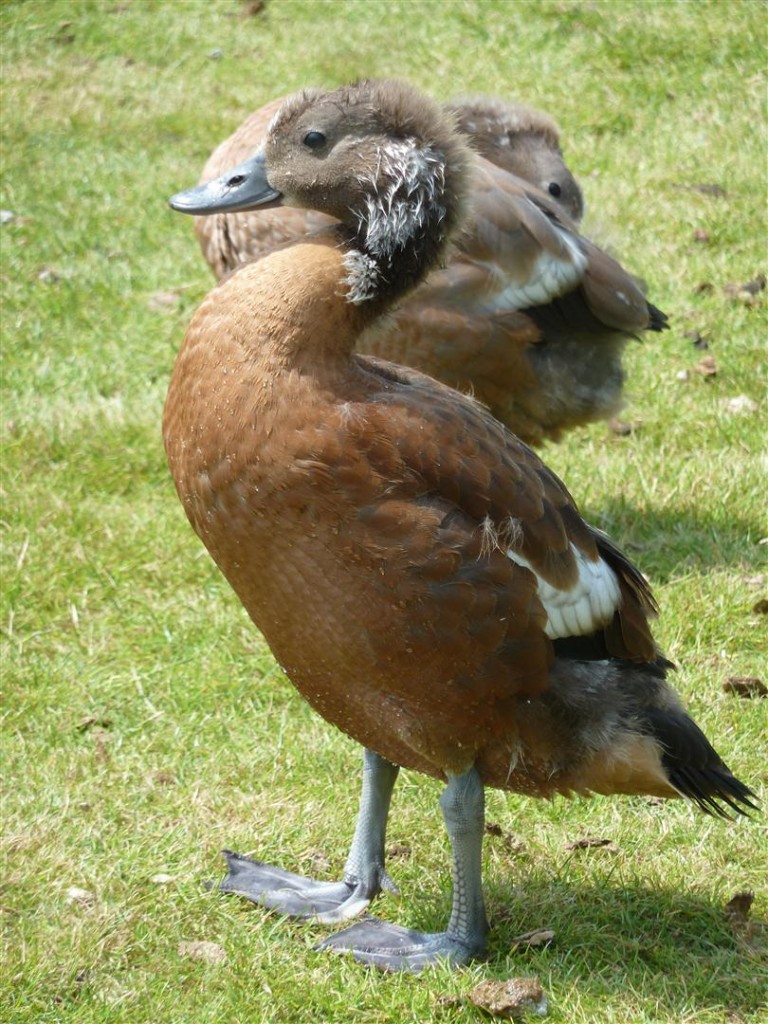From juvenile, to eclipse, to beautiful.
At this time of the year our collection birds can be forgiven for becoming a touch vain... but the good news for visitors is that our collection birds will soon be back to their beautiful best!
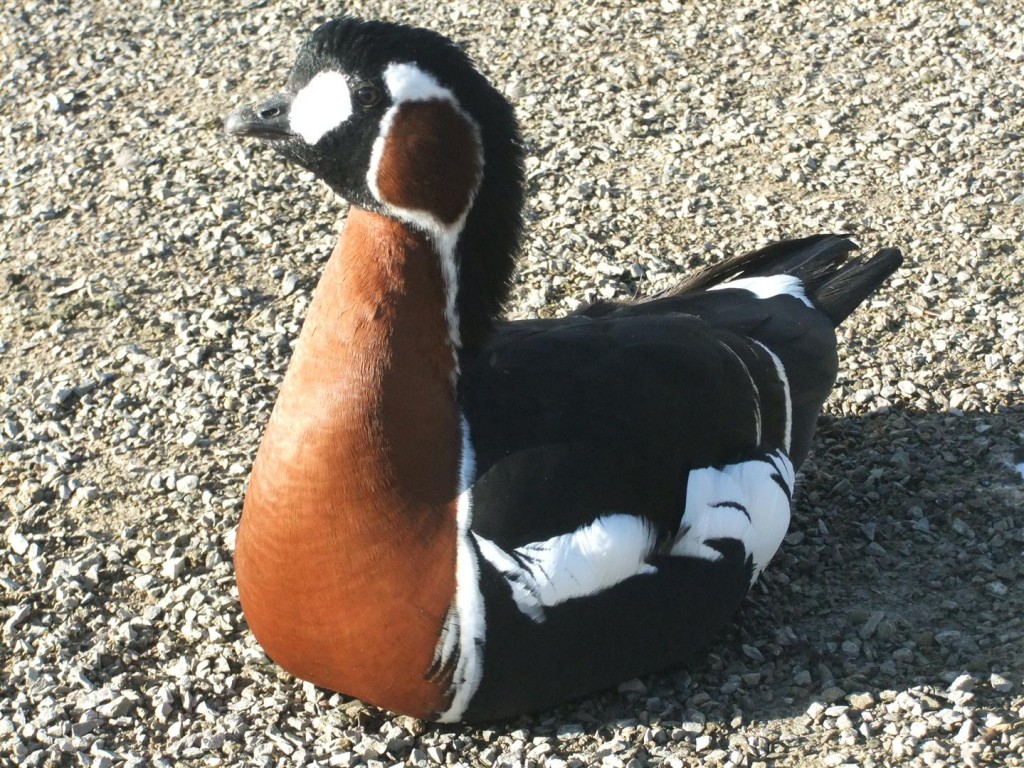
Post breeding season birds enter the moult, and depending on whether they physically bred in 2014 or not, they can currently be observed along a sliding scale of feather re-growth. There are no standard moulting rules, and some species do a lot more moulting than others. Some species lose a feather at a time, and others drop the whole lot but re-grow very quickly.
As an overview it is safe to say that migrants moult every flight feather in one go, and enter a dowdy eclipse plumage where their body feathers recycle as their flight feathers grow through. This method takes a lot out of you, and this technique is currently clear to see in the Slimbridge exhibits. A clever migrant finds a quiet spot, with good food sources, seeks safety in numbers, and moults within 4-5 weeks. Captive species that do this method include the cranes, and the Red-crowned crane really lose condition when they moult. Mrs. Grumpy-guts gets even more grumpy than usual but we feed her the odd titbit to cheer her up, and she quickly regains her body condition. Anyone who has experienced a teething baby will know the frustration first-hand; it takes a lot out of them!
This Bar-headed goose did not breed this year and so began his moult early. Virgin feathers need a lot of attention because during the growth process the feather quills are exceptionally heavy and susceptible to damage. As a result, birds are obsessive with keeping them in line as any damage must be endured for months! This guy spends an inordinate amount of time tending to them, preening them with oil from his preening gland and keeping all the tips smooth. As the feather leaves the quill, the bird must knit each fibre together, adding oil and preening away all the danda (sort of cracked up quill powder).
As one of the world's most breath-taking migrants, Bar-heads take moulting very seriously. It is most rare to see an out-of-condition example. Flying over the Himalayas far higher than we dare go, these geese make one of nature's miracle journeys. With red blood cells capable of taking on over twice the amount of oxygen and multiple lung sacks, these guys are the epitome of high altitude flight. To make such an epic journey in order to breed in the fresh mountain lakes, these birds have to make a very quick turn-around.
Take a look below for some other preening in action!
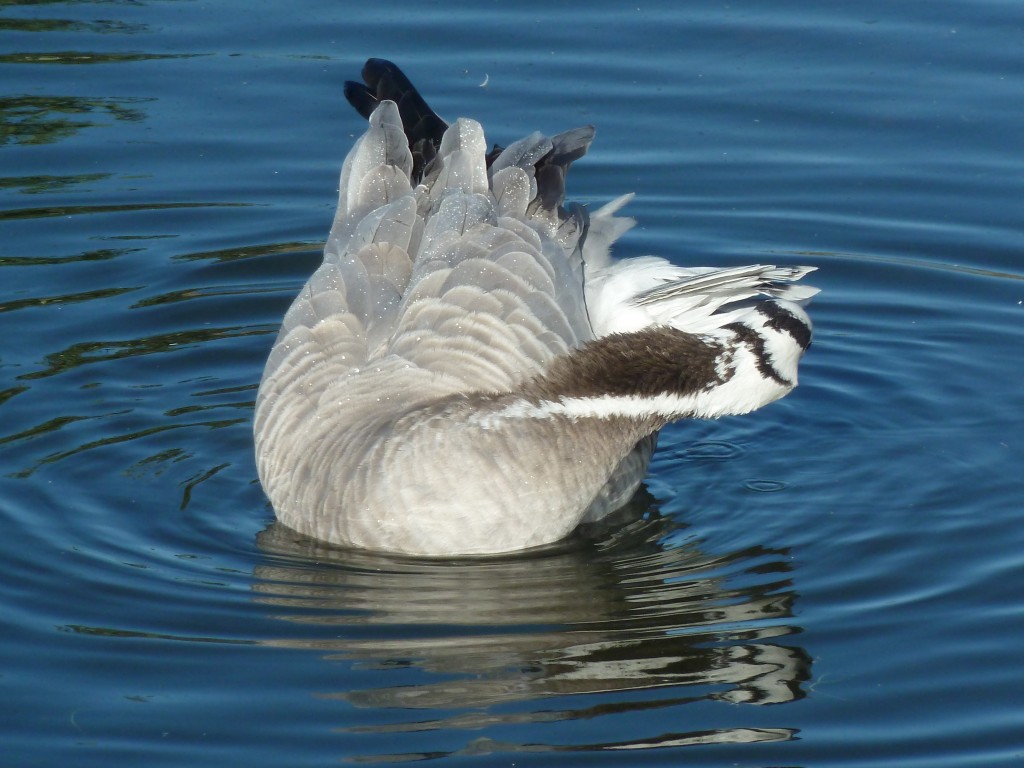
This group of Orinoco goslings from 2013 are in the early stages of their first ever feather growth. You can see that the first to grow are the insulatory body feathers around the breast and flanks. As southern hemisphere sheldgeese they are sedentary non-migratory geese, and rather than growing quick disposable juvenile plumage they feather straight into their adult colours. This takes time, and their slow growth pattern often makes for nervous Aviculturalists each summer as later hatched species out-grow and out-feather them as they take their precious time. Migrants gorge as they grow, but non-migrants can afford to nibble.
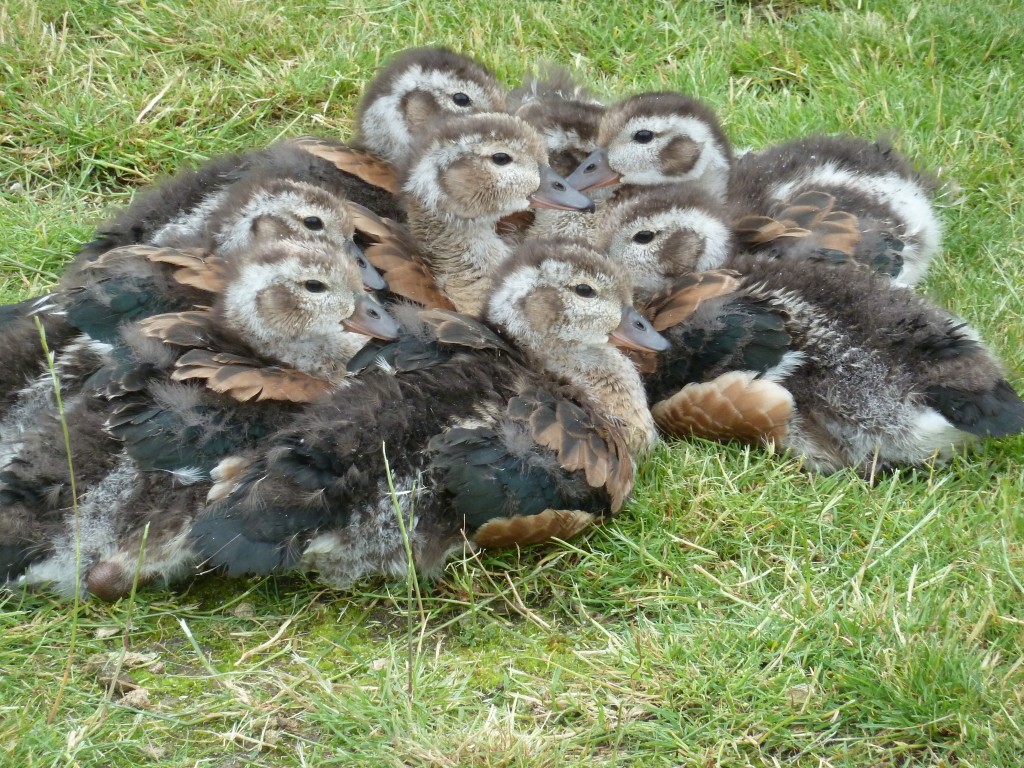
As you can see here, Greater Magellan also feather straight into their adult plumage (albeit a touch dowdy around the edges,) and these girls are constantly busy getting themselves shipshape for the winter.
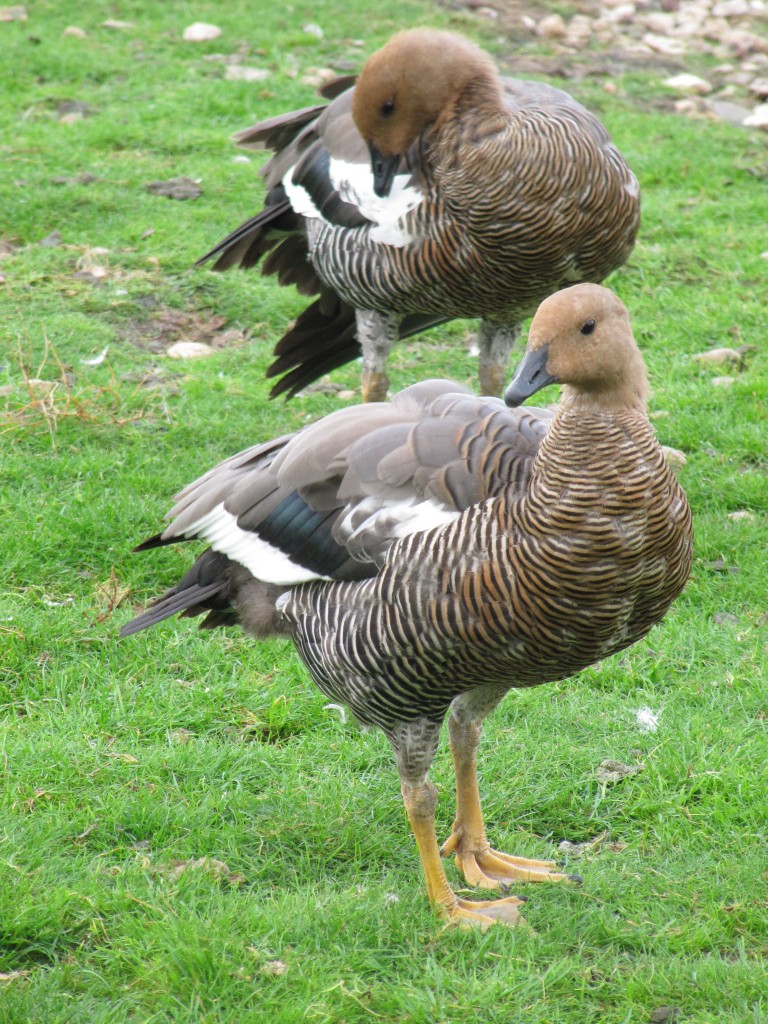
Bronzewings also feather slowly, leaving an adorable mohican stage, shortly followed by the fluffy bottom stage...
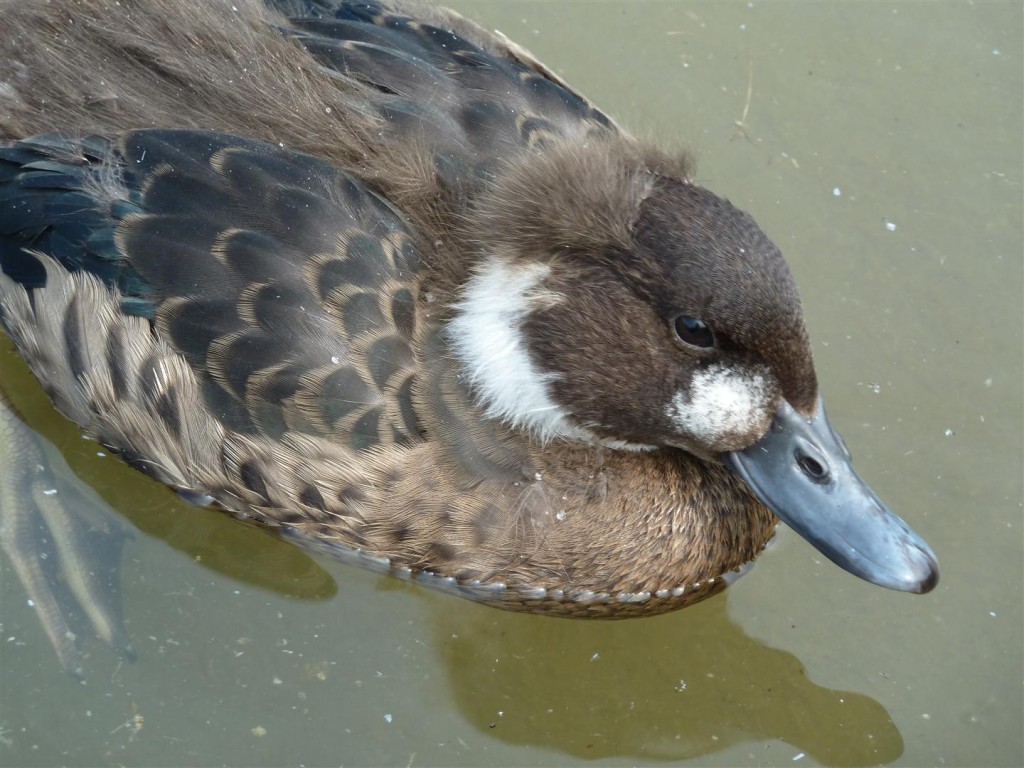
The danda is clear to see here, little white chunks of quill tips littering the down of this Bronzewing.
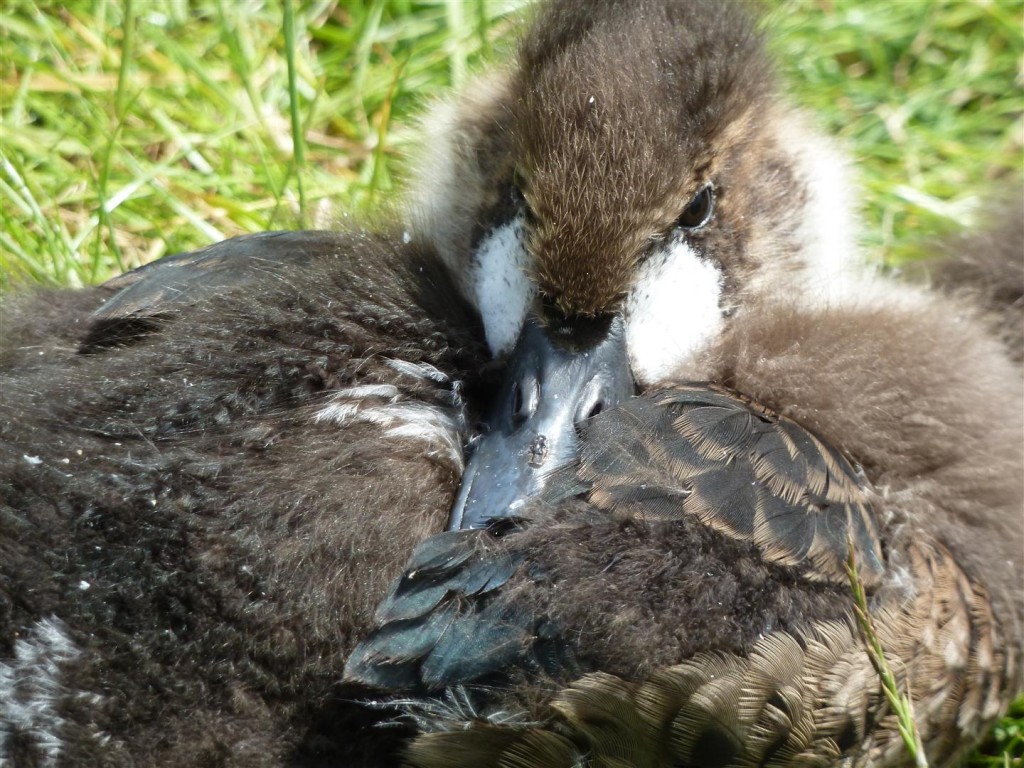
These south-African shelduck are sporting full-body feathers, but not a single primary!
Then there is this chunky chap, a juvenile male Falcated. He feathers rapidly into juvenile eclipse-style plumage and then over a period of 4 months starts the slow transformation into his beautiful adult self. His textures already give away his sex, but his natural camouflage is as effective as the females around him, giving all young Falcated teal a maturing period of relative safety before they hormonally graduate into their magnificent fluorescence.
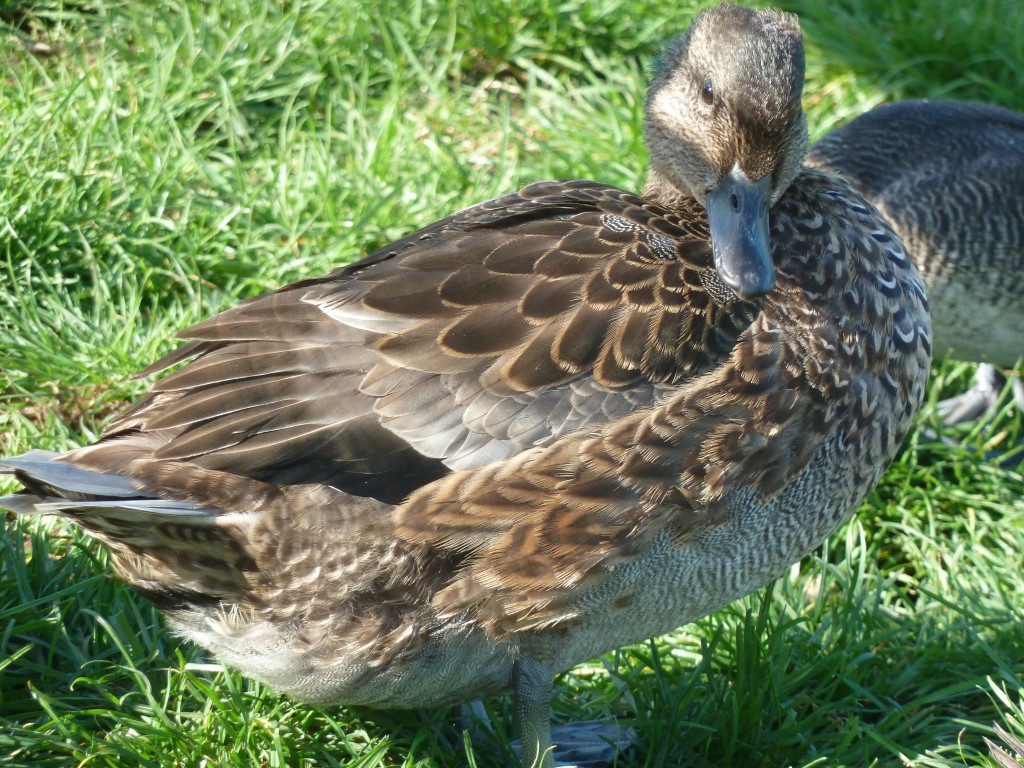
The kings and queens of feather growth however are the northern geese, especially the snow geese and emperor goose. These guys fly far into the Arctic circle and have a very short turn-around window for breeding. Snow geese go from an egg to a bird that can fly south in under 70 days. You will often see young juveniles flapping their stubby wings and pumping those muscles because the second their flight feathers are through, they need to leave! They need to build up their stamina before-hand.
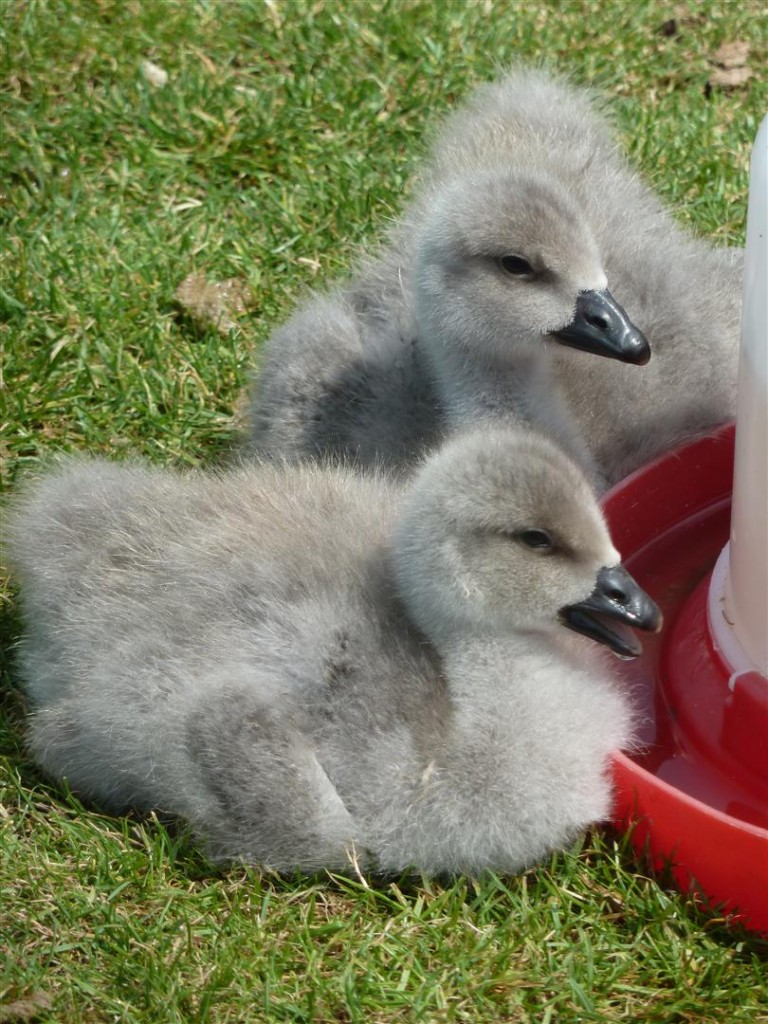
As such you can often see juvenile flying amongst a migrating group; not just because they are a little dowdy compared to the mums and dads, but because they still have fluffy bottoms and a mohican! Quite the contrast to the fully-feathered bodies of the southerners with not a flight feather to their name :)
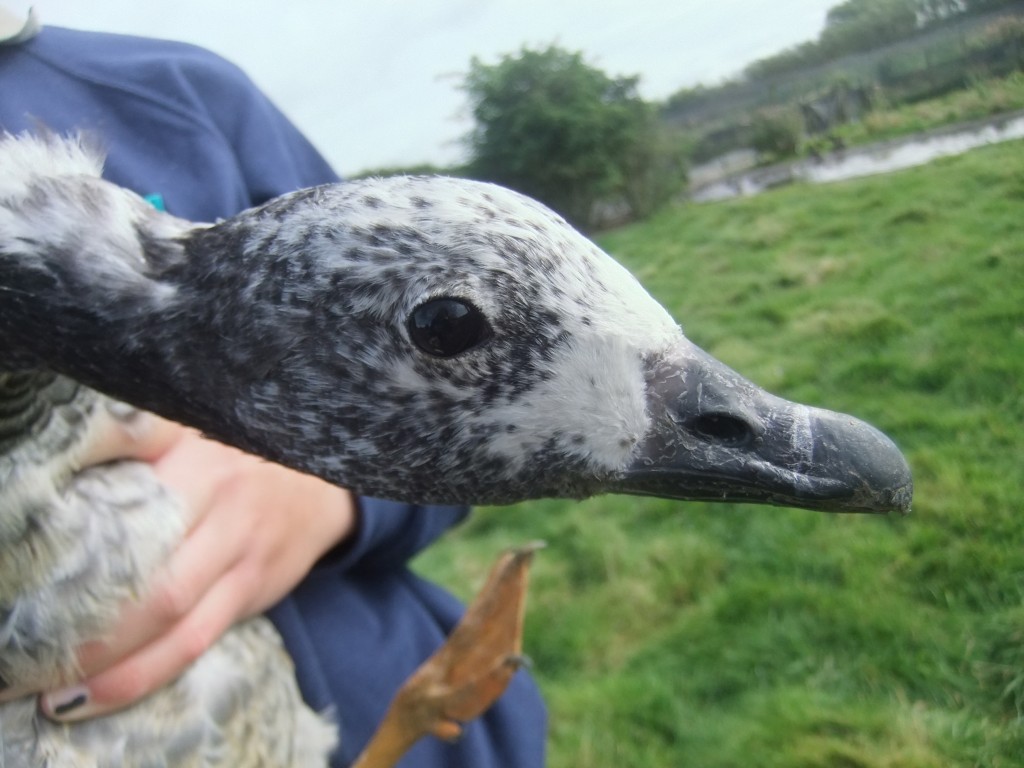
Lastly there are just the lazy ones... Freckled ducks keep their "baby-brain" for a good 2 years or so. They don't bother with water-proofing until the absolute last minute, they hate washing, they get themselves filthy dirty as if it's going out of fashion. They squeal away for food but wouldn't say boo to a goose, except when they are bickering amongst themselves. They've definitely a tendency to copy-cat, and some groups will wash and gobble down their food during the day whilst another group will abstain from food all day long only to cover themselves in grub during the night. Strange wee beasties...
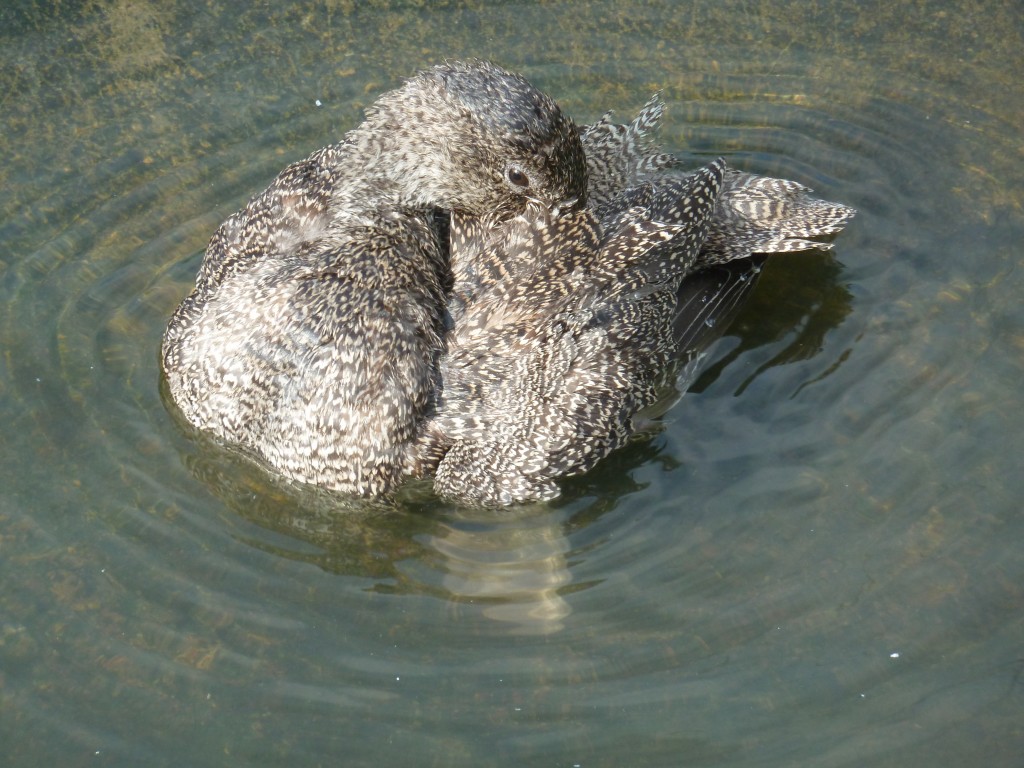
Try out your new observation skills on the collection in the coming weeks, and see if you can see the moult in progress!
